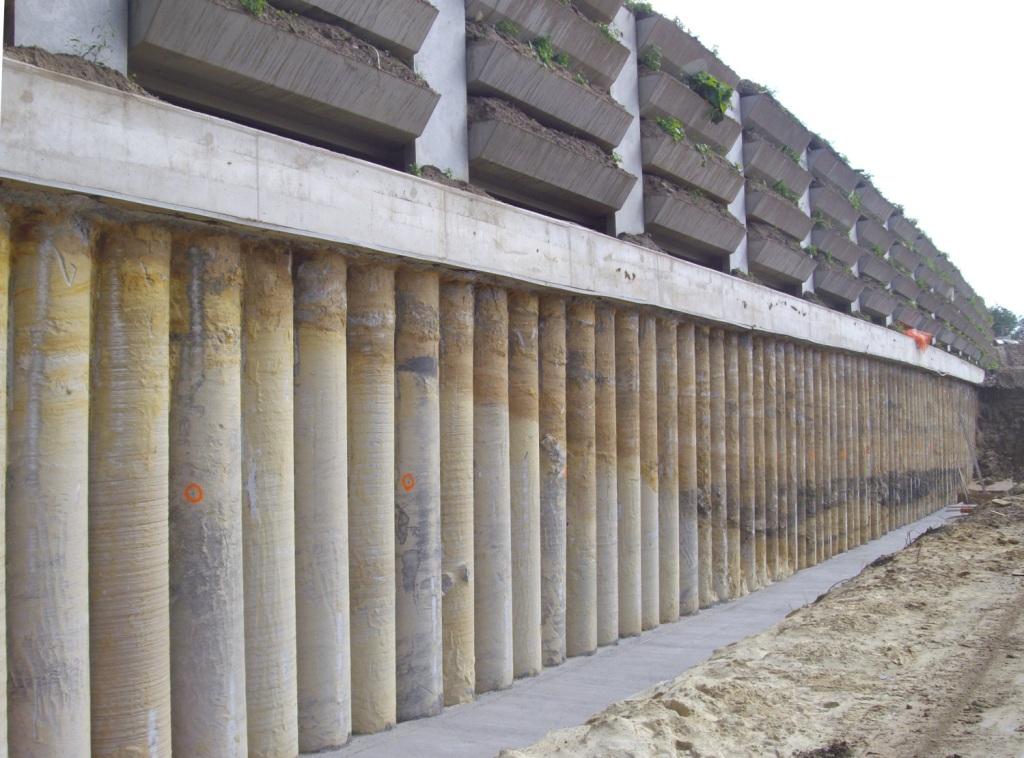
What Is Contiguous Piling?
Depending on what type of wall you are installing, you can use different types of piles. For example, a contiguous pile wall is one that is built with piles that are connected to each other. Learn more about WHAT IS CONTIGUOUS PILING.
Typical soil conditions for this type of wall
Typical soil conditions for this wall type include soil that is either retained (directly behind the wall system) or foundation soil (the existing on-site soil). It is usually not a good idea to build a wall in soil that is not retained because it can be easily compacted.
Typically, a typical soil mix is composed of sand, gravel, silt, and clay. It is a good idea to choose a dense, cohesive, and stiff mix for your foundation. This is because loose soils can collapse after saturation. It is also a good idea to choose a mix with low to medium plasticity.
The most important thing to remember about the typical soil conditions for this type of wall is that a soil support wall can be constructed in a wide range of soil conditions. The right soil type can be the difference between a successful and unsuccessful wall. This is especially true if there is a slope behind the wall.
There are a number of standard specification items that govern the construction of this wall type. A standard drawing can provide guidance on the definition of the walls and the proper combination of footings. It can also give you the choice between high pressure (H) and low pressure (L) footings.
A soil support wall may be constructed in sand, gravel, or even reinforced concrete. These walls can also be designed to meet building codes and AASHTO load combinations.
Piles used for contiguous pile walls
Unlike other soil supporting systems, contiguous pile walls are less expensive and more effective. They are also a better choice for building in urban environments.
They have minimal vibration and can be installed in tight spaces, such as basements or built-up areas. They are suitable for a wide range of soils. They are particularly suited to crowded urban settings and sites with dry, cohesive soil.
A primary pile is constructed first, using a soft cement-bentonite mixture. It is then reinforced by steel bars or beams. Then the secondary piles are drilled through the foundation soil and then formed in between the primary piles. They are usually interlocked by a gap of about 150mm. Then concrete is installed.
Pile walls are used for landslide remediation and displacement control. They can be constructed to a diameter of 1500mm to a depth of 32m. They can be constructed as propped cantilever walls or as a structural concrete facing wall tied to the piles. They are a cost-effective option and can be installed at a reduced level of excavation.
Contiguous piled walls are typically constructed with Continuous Flight Auger (CFA) or rotary bored piles techniques. They are commonly applied in residential and commercial settings.
The piles are placed very closely together and are designed to carry lateral bending forces. They are usually capped at the top with a capping beam.
Cantilevered tilt-up walls
Generally speaking, cantilevered tilt-up walls are constructed from concrete. However, the wall design can take various forms. The construction sequence, resources and resources availability are some of the factors that affect the design of the wall.
A retaining wall consists of a set of wall panels, a footing, anchors and a support system. A wall is designed to resist material stresses, overturning moments, and seismic forces.
To design a wall, the soil bearing capacity must be adequate. For example, if the ground water table is below the excavation level, the groundwater profile will determine the design of the wall.
The design life of the wall is another factor that affects the wall design. For example, if the wall is expected to be in place for only a short period, the wall will need to be designed to minimize the horizontal load. If the earth pressure is high, the wall will need to have reinforcing on the front face.
The horizontal modulus of the soil is also an important property. For instance, if the groundwater table is above the excavation level, the wall may need to be anchored at several tiers. If the soil is hard rock, it will not be suitable for sheet piles.
The stem of a cantilevered wall is generally constructed of 8" or 12" deep concrete masonry block units. It is typically grouted and partially reinforced. The stem is also tapered for economy.
Comments on “Contiguous Piling”